 The silence was deafening.
The silence was deafening.
Our first morning in the frigid waters of the Atlantic, I peered out at rugged, forbidding mountain peaks capped with snow. My wide eyes were met by visions of ages-old glaciers looming large; deep crevices winking steely blue eyes and ice crackling all around. Antarctica. Truly, the frozen continent.
Breathing deeply, I inhaled the fresh, crisp air that knows no detectable pollution. I listened to the silence. The quiet was overwhelming. Broken only by an occasional chirp of the “super birds” that live on this lonely planet, the silence embraced me, alone in this majesty. I was the only soul standing on the frozen deck of our expedition ship.
It was never on my bucket list. Or any list.
Antarctica was some far off notion, a passionate dream my mom had and never realized. But, my adventurous daughter found a group of like-minded women on Facebook called Girls Love Travel and Antarctica became a reality. For both of us.
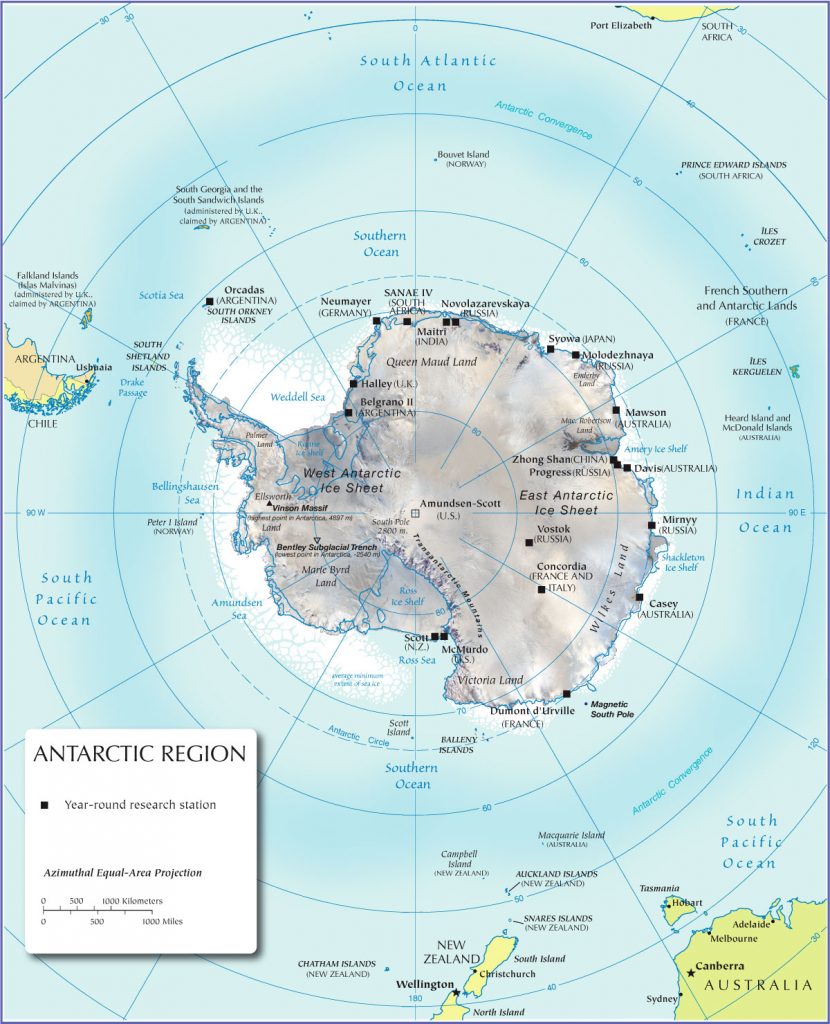 For 12 days we lived aboard Oceanwide Expedition’s M/V Ortellius in glacial polar waters. The ship – small at 123 passengers – was warm. Outside, temperatures averaged between 32 and 37 F, but the winds of 11 to 31 mph made it feel colder.
For 12 days we lived aboard Oceanwide Expedition’s M/V Ortellius in glacial polar waters. The ship – small at 123 passengers – was warm. Outside, temperatures averaged between 32 and 37 F, but the winds of 11 to 31 mph made it feel colder.
Even now, I am filled with wonder and awe that this land exists on the same planet that I live on. Having left noise, pollution, people, cars, and busyness, I was blanketed in a net of quiet beauty beyond my imagination.
I didn’t expect to see rocks. Yet there, they were, craggy mountaintops lining the shore. I did expect to see penguins. And they overwhelmed us, by the thousands, in their curious community groups. I did not expect to fall in love with this no-man’s land that the majority of the world’s population will never see. Yet I did.
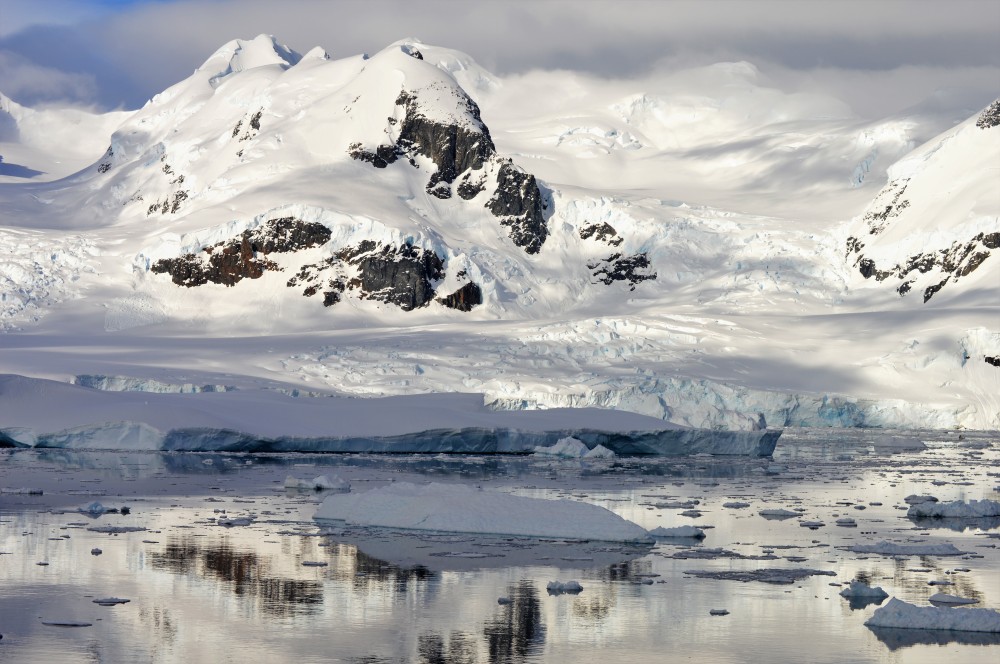 Getting there isn’t easy, whether you come from the United States or Ecuador. A full day’s travel with an overnight brings you to the southernmost tip of South America: Ushuaia, Argentina. We had two days there, but others tacked on time at the end of the cruise, which I highly recommend.
Getting there isn’t easy, whether you come from the United States or Ecuador. A full day’s travel with an overnight brings you to the southernmost tip of South America: Ushuaia, Argentina. We had two days there, but others tacked on time at the end of the cruise, which I highly recommend.
Ushuaia is a small town of 68,000 people. It has many attractions of its own, primarily involving trekking in national parks, a main street for shopping, good restaurants and comfortable hotels. Passing through security will make you smile: a quick glance at a paper that indicates you are a passenger on Ortellius, and a short unescorted walk down the pier with a detour through an empty security station featuring silent screeners.
Once on board, you are quickly shown to your cabin.
 The 53 cabins range from a superior double with two windows to four bunks with a porthole. The beds are comfortable and the bathrooms have ample storage.
The 53 cabins range from a superior double with two windows to four bunks with a porthole. The beds are comfortable and the bathrooms have ample storage.
The ship is a tough icebreaker that offers little in the way of entertainment except for a common lounge/bar area and extra seating on the top deck for the few days warm enough to enjoy it. But this isn’t one of those cruises you take to be entertained aboard the ship. Weather dependent, we were looking forward to mountaineering, kayaking, snow-shoeing, hiking and camping on the continent.
 The route to Antarctica is as arduous by sea as it is by air. You float through the beautiful Beagle Channel where you can spot the elusive Magellanic penguins. You can sometimes see Fin and Humpback whales, and there are always flocks of Giant and Cape petrels soaring across the sky from one side of the ship to the other.
The route to Antarctica is as arduous by sea as it is by air. You float through the beautiful Beagle Channel where you can spot the elusive Magellanic penguins. You can sometimes see Fin and Humpback whales, and there are always flocks of Giant and Cape petrels soaring across the sky from one side of the ship to the other.
Then it’s time to batten down the hatches. Drake’s Passage famously becomes Drake’s Shake – the world’s worst amusement ride – or, if you are lucky, Drake’s Lake. Our crossing was somewhere in the middle. Armed with seasick bands, Dramamine, lavender oil and, finally, giving into scopolamine patches, we made it.
Drake’s Passage is named for the famous British explorer and sea captain, Francis Drake. After he lost a ship sailing the west coast of South America, he proved the existence of a convergence of the Pacific and Atlantic Oceans, as well as the Southern Seas. What makes the Drake Passage so infamously rough is the fact that currents at this latitude meet no resistance from any landmass.
We spent the next two days preparing for landfall. When we could leave our beds and staterooms without being tossed from wall to wall, we attended lectures on birds, mammals and photography. And because introduced organisms are a significant problem in Antarctica, we attended a “Vacuum Party” literally vacuuming our clothes, boots and parkas.
Finally through the Passage, we awoke on the third day to chunks of ice floating lazily past the ship. We even saw a huge mesa-like iceberg that seemed miles long and clearly had floated miles from its host. Antarctica’s surface, of which we would see only a tiny fraction, is about the size of the United States and Mexico put together.
Interestingly, it is governed by a treaty signed by more than 30 nations. The Antarctic Treaty was signed in December of 1959, but wasn’t in force until June 1961. The treaty established Antarctica as a zone of peace and science. There is no official language, capital or currency.
Our first Zodiac cruise took us into Orne Harbor, home of the only known colonies of Chinstrap penguins. We spotted blue-eyed cormorants, snow petrels, snowy sheathbills, and Antarctic shags and terns. We were thrilled by Weddell seals, skuas and humpback whales. We viewed endangered species like the grey-headed albatross and the fin whale.
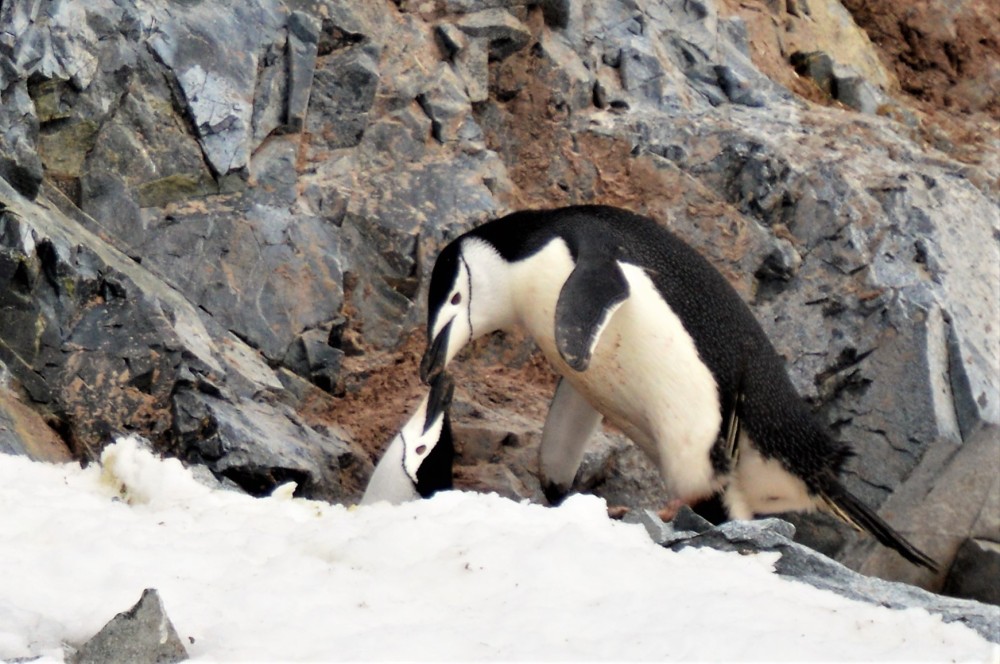
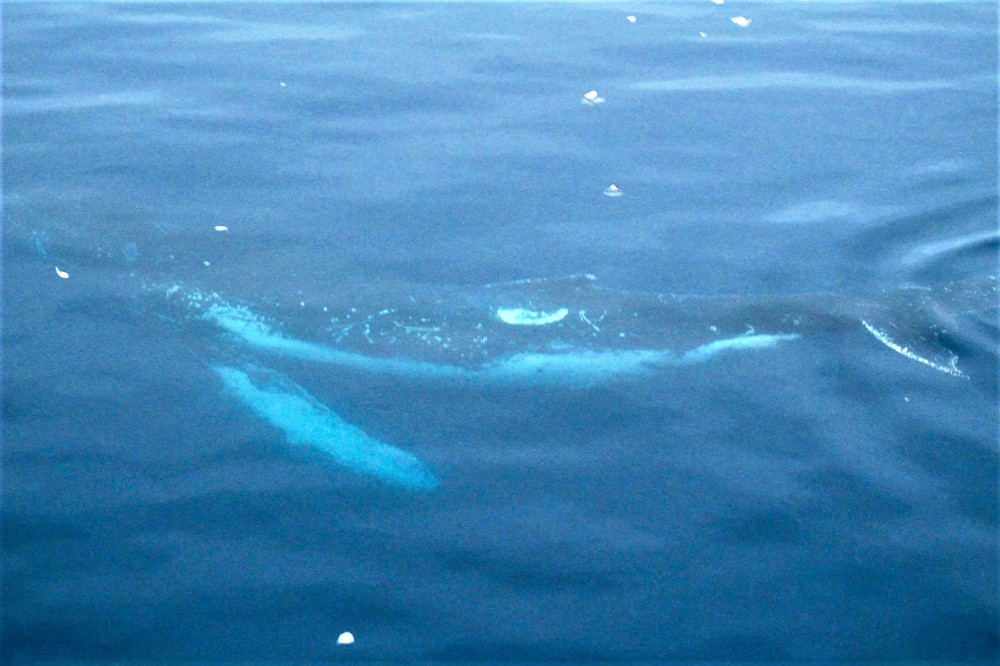 The next zodiacs took us to Cuverville Island to seen Gentoo penguins. And boy! Did we see Gentoo penguins!
The next zodiacs took us to Cuverville Island to seen Gentoo penguins. And boy! Did we see Gentoo penguins!
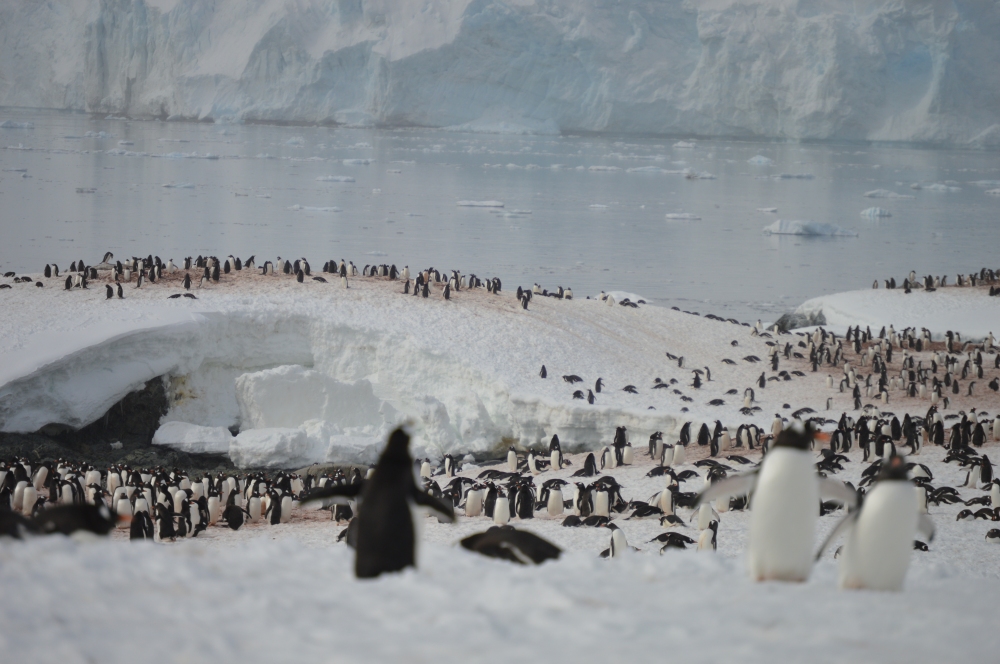 Thousands of penguins lined the shore and stretched as far back into the snowy mountains as we could see. We scattered, carefully crossing over the penguin highways and finding spots to sit. Time stood still as we watched the penguins play, fight, mate, swim and slide through the snow. They seemed just as interested in the bundled humans as we were in them, as they marched down the smooth ice highways, unafraid of the strangers so captivated by their antics.
Thousands of penguins lined the shore and stretched as far back into the snowy mountains as we could see. We scattered, carefully crossing over the penguin highways and finding spots to sit. Time stood still as we watched the penguins play, fight, mate, swim and slide through the snow. They seemed just as interested in the bundled humans as we were in them, as they marched down the smooth ice highways, unafraid of the strangers so captivated by their antics.
The next five days were filled with exhilarating – and sometimes frustrating – challenges, as well as unforgettable experiences. We survived engine trouble and massive ice floes, storms and heavy fogs. Some days, all activities were cancelled, and we spent time marveling at the quiet beauty around us; the only ship within miles.
We visited research stations – the Argentinian Brown and Britain’s Port Lockroy. There are more than 40 permanent research stations on Antarctica, belonging to 30 nations. Antarctica has no indigenous inhabitants or permanent residents. On average, the larger research stations house 1,000 to 4,000 people, depending on the seasons.
 I tried sports I had never experienced in my six decades and found I loved mountaineering and snow shoeing. I passed on the polar plunge and delighted in kayaking with my daughter.
I tried sports I had never experienced in my six decades and found I loved mountaineering and snow shoeing. I passed on the polar plunge and delighted in kayaking with my daughter.
Our final night on land was a camping adventure. Having hurt my wrist, I was little help to my industrious offspring as she prepared our site for both of us. The staff picked Leith Point, a flat cape jutting out from a steep mountain into crystal blue water. We dragged our equipment onshore from the zodiacs and pulled them through knee deep snow to our designated spots. There, we dug grave-like trenches in the snow, packing the excess around the edges to protect us from the wind.
We were given three sleeping bags each to stuff inside one other, the outside a waterproof covering to protect the bags from moisture and to cover our exposed faces. There was little sleep, especially since dusky daylight lasted throughout the overnight hours.
I loved the quiet, the expanse of stars with zero competition from earthly light pollution, and even the curious penguins that wandered through the campsite. But most of us were already up, packed, and ready to get back to the ship before the promised 6 a.m. wakeup call. It was an experience for the memory banks, but not one I need to do again!
With the ship heading back to Argentina, we were able to visit Deception Island. This famous underground volcano resembles a large donut with a bite taken out of one side. The 1800-foot opening is where small ships enter the flooded caldera. Still active, its last eruption was between 1967 and 1970.
The island once was home to a British Antarctic Survey base. No longer operational, the buildings remain, as well as those belonging to the Hector Whaling Factory that operated between 1906 and 1931. We trudged in deep snow around the abandoned buildings, eerily emanating a sense of historical tragedy and triumph.
Before clambering aboard the last zodiac ride of the trip, we even found time to have snowball fights and pose for human penguin pictures.

To take our minds off the approaching Drake’s Passage, the ship planned presentations and exchanges of photos.
By far the most interesting was a discussion on ice.
Antarctica comprises over 84 percent of the world’s ice. Greenland has just 12 percent, with the remaining percentage located in other polar regions. What we see at the surface is about one-seventh to one-tenth of what lies below the water. We learned ice has names, like the bergy bits that glide through the water and growlers, larger chunks of floating ice.
And why is ice important? Because 75 percent of our fresh water storage is in ice. It is the climate engine of the earth. From 1979 through 1992, researchers saw a significant loss of ice in the arctic regions and a surprising small increase in the Antarctic, which was seasonal. Still, researchers find that, overall, peninsular ice is shrinking and the continental ice shelf is melting away.
Surprisingly, Antarctica is considered the driest of all continents and the largest desert on earth. I still could not wrap my head around that, being surrounded by glacial waters, mounds of snow and craggy mountain of ice. But my chapped lips and dry sinuses certainly attested to the fact!
With an uneventful docking and long flight home, I had time to process the experience. Back at home, I was asked many times to describe it. I found I couldn’t. Not really. I used words like surreal. Spectacular. Majestic. Phenomenal. Peaceful. Serene.
I could go on and on. Suffice to say, if you can go, don’t miss the opportunity. It is unlike any experience you will ever have.

























WOW! An amazing blog post. This is most definitely on our bucket list. I look forward to the next adventure!
LikeLiked by 1 person
Thank you so much! Go!!!
LikeLike
Your adventures always amaze me! I expect to see a book published in the future of said adventures: “The Life and Wild Times of Laurie Paternoster “. I trust I will receive a signed copy! Love you
LikeLiked by 1 person
Most definitely! 😍
LikeLike
Wow, what a great read! I learned so much from your piece. Your photos are great – Nat Geo worthy for sure. I’m so happy for you that you got to share the experience with Megan. You’re an inspiration!
LikeLiked by 1 person
You sure know how to deliver! Wonderful adventure— one that few of us will be able to experience, but traveling there vicariously through you, was a thrill!!
LikeLiked by 1 person